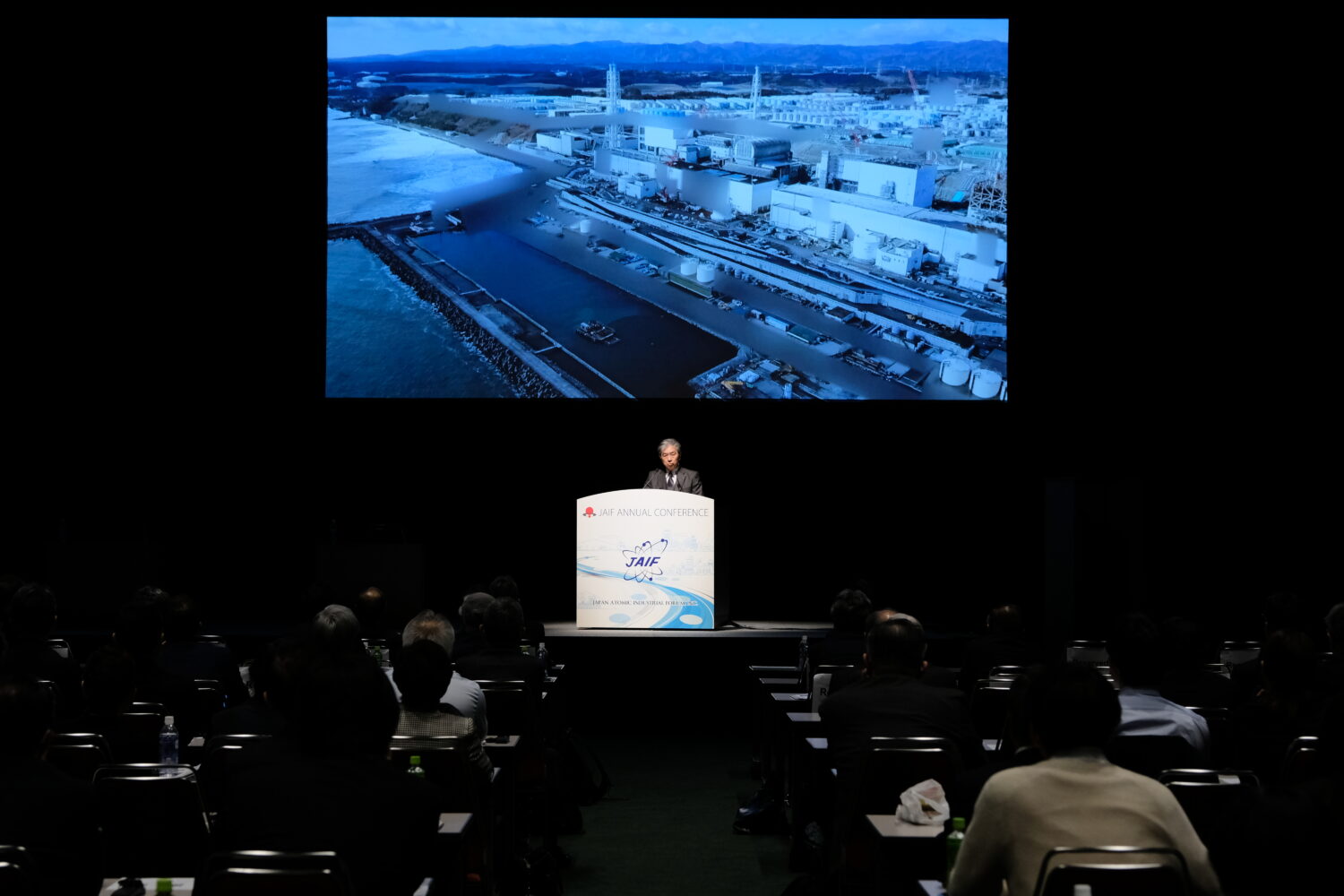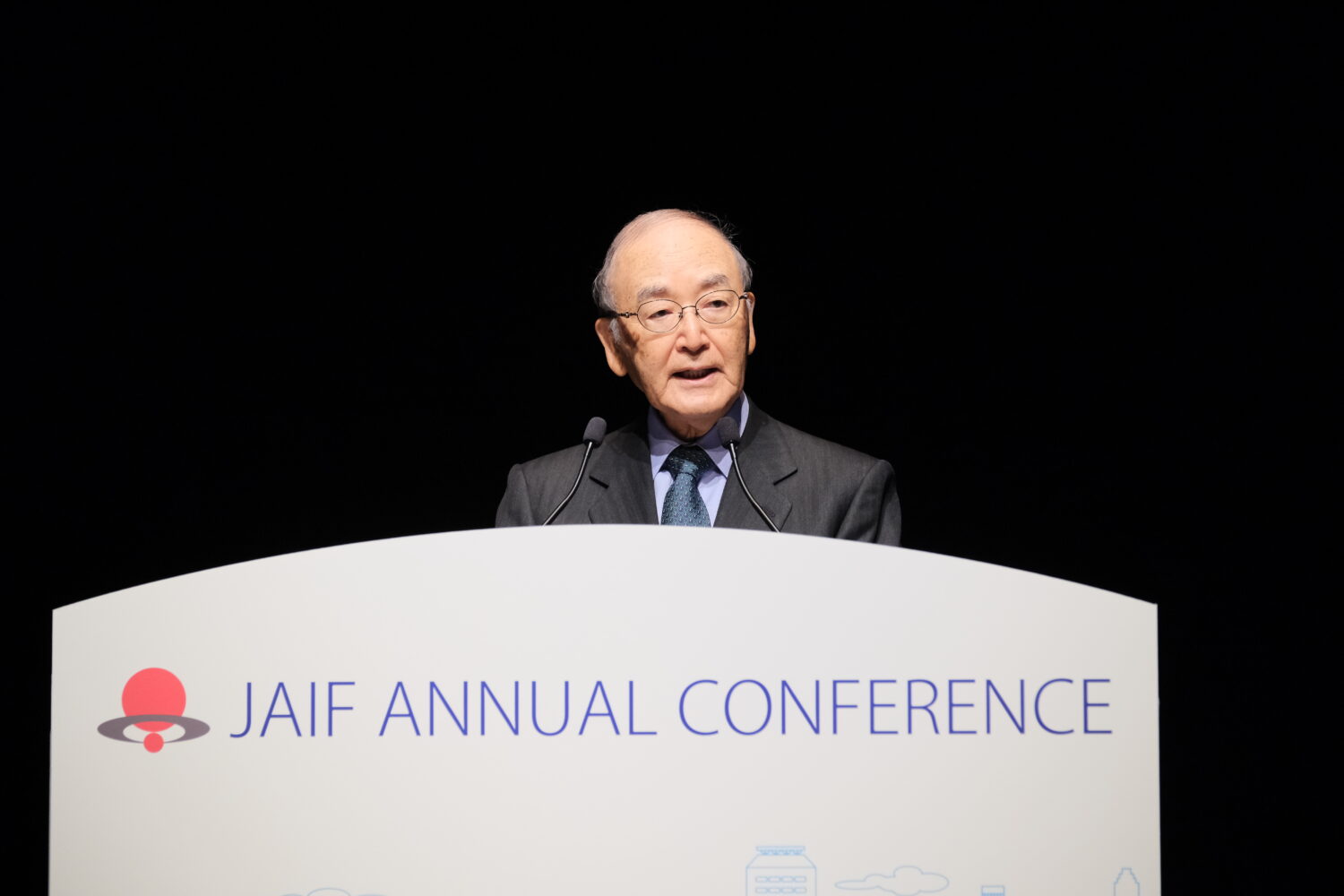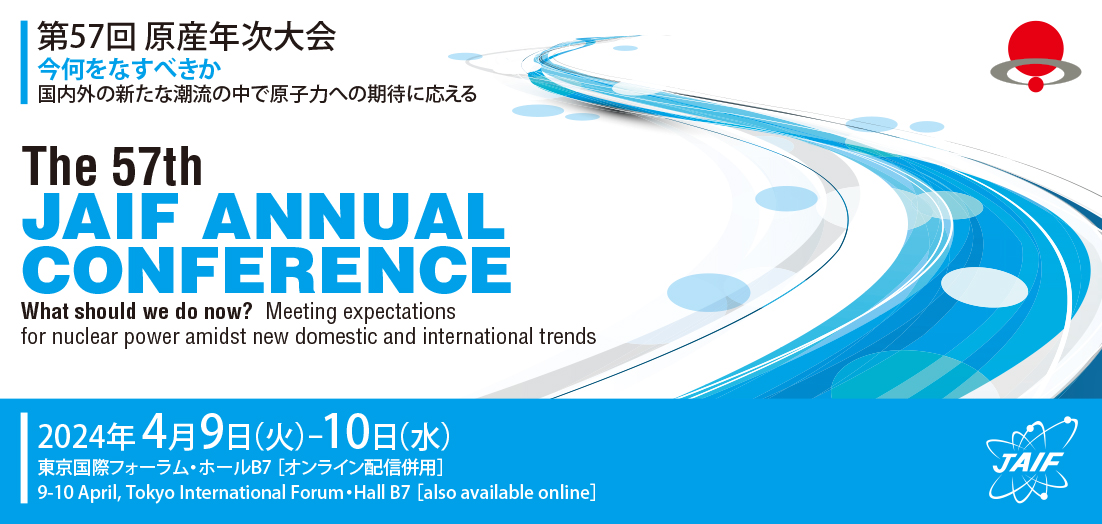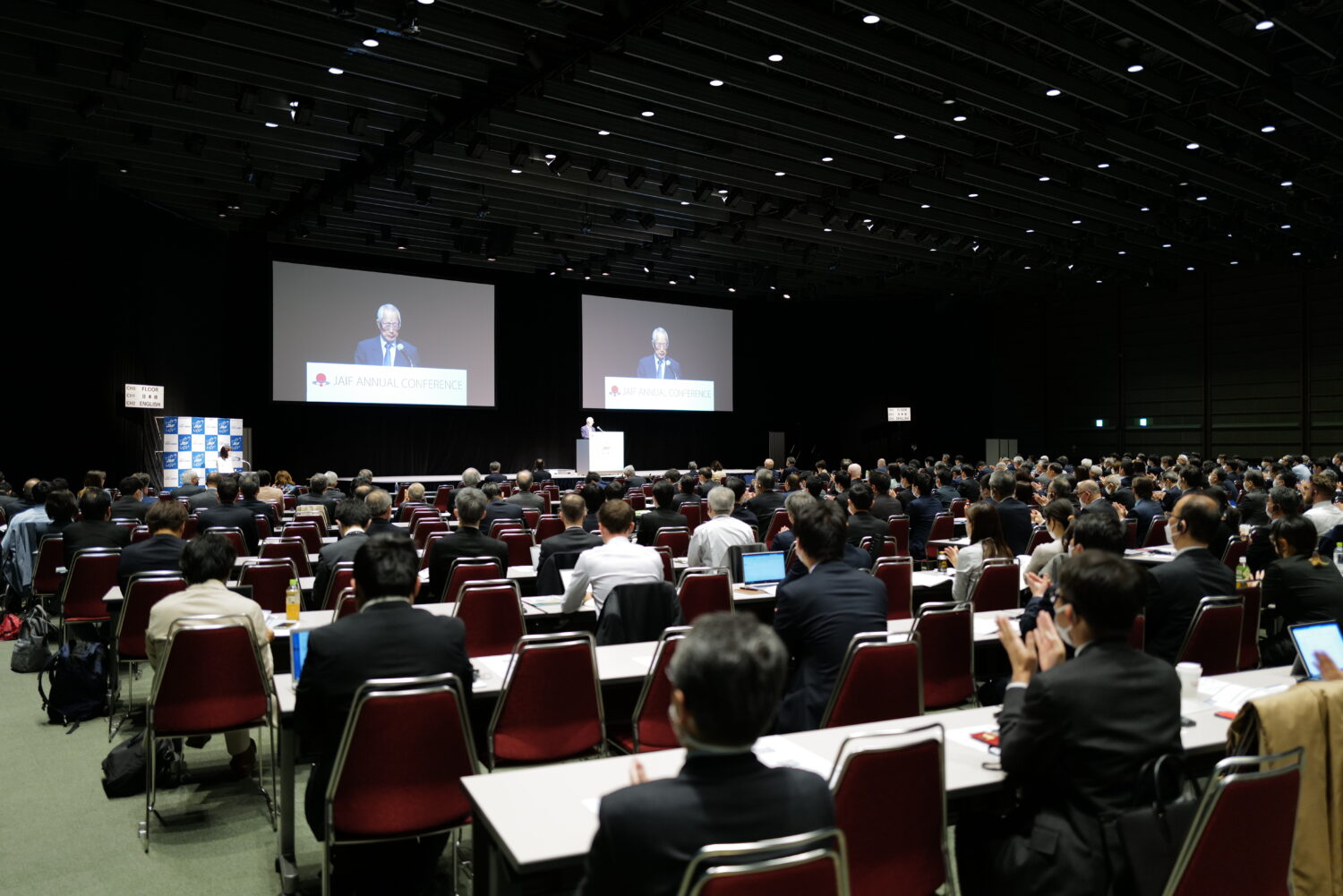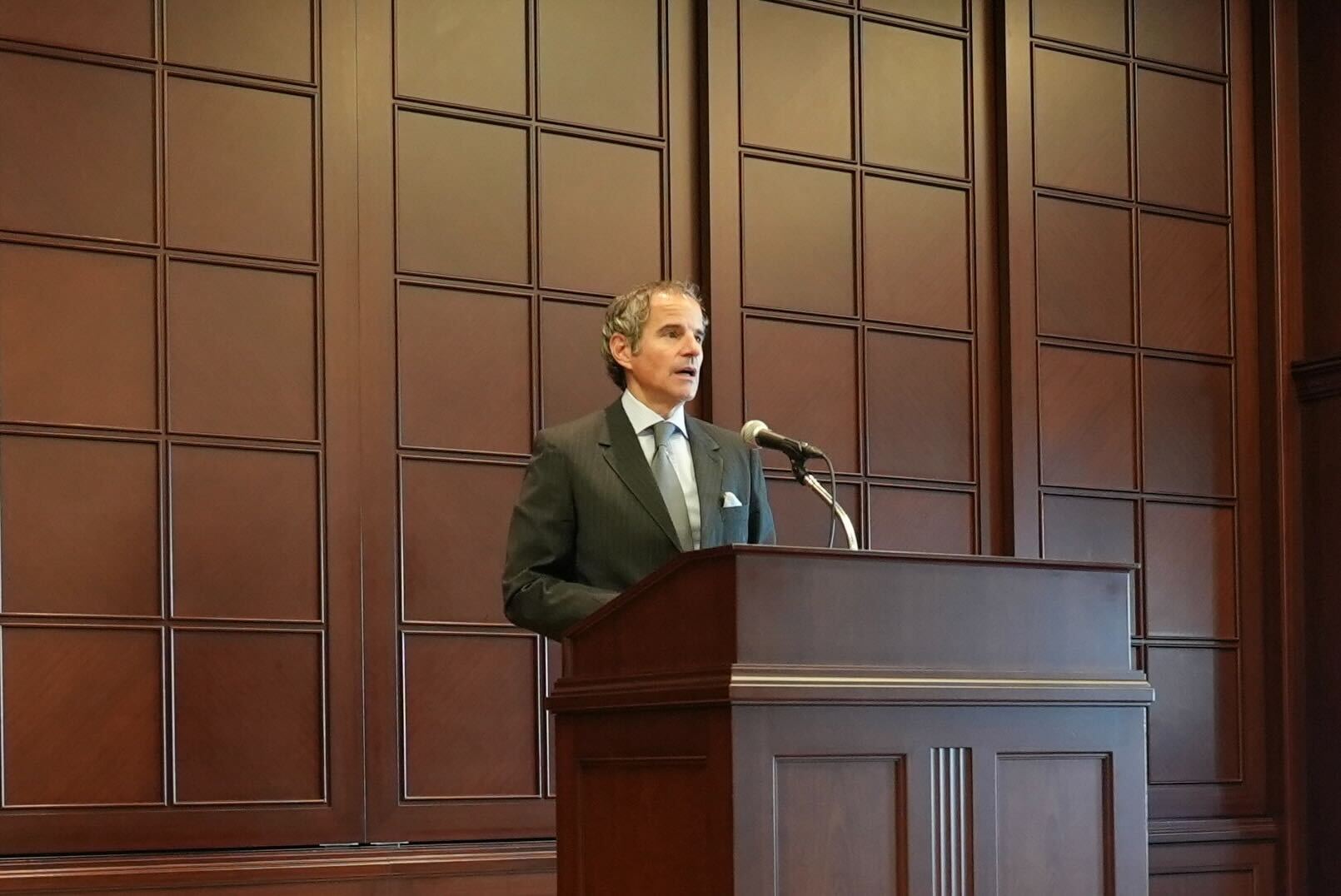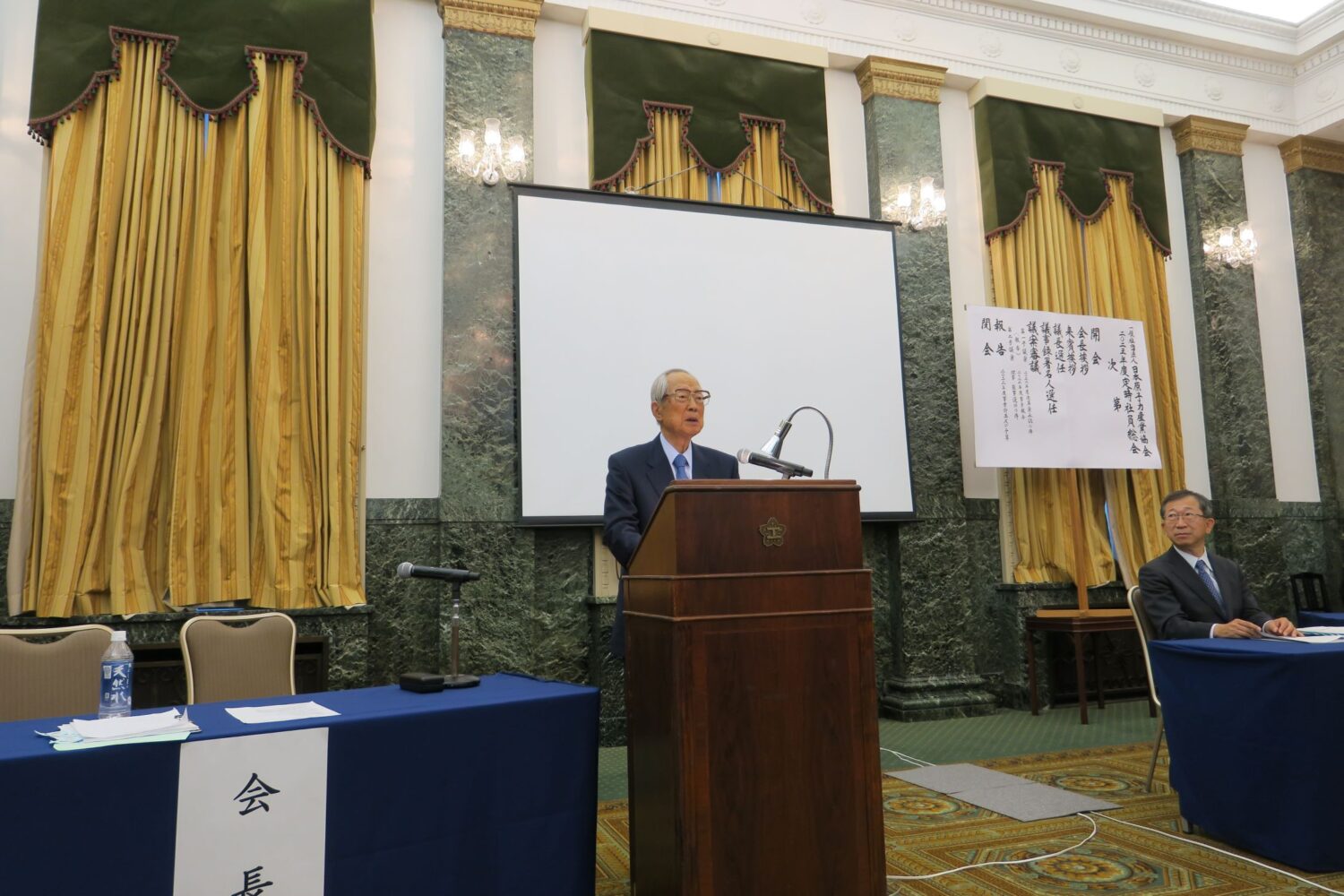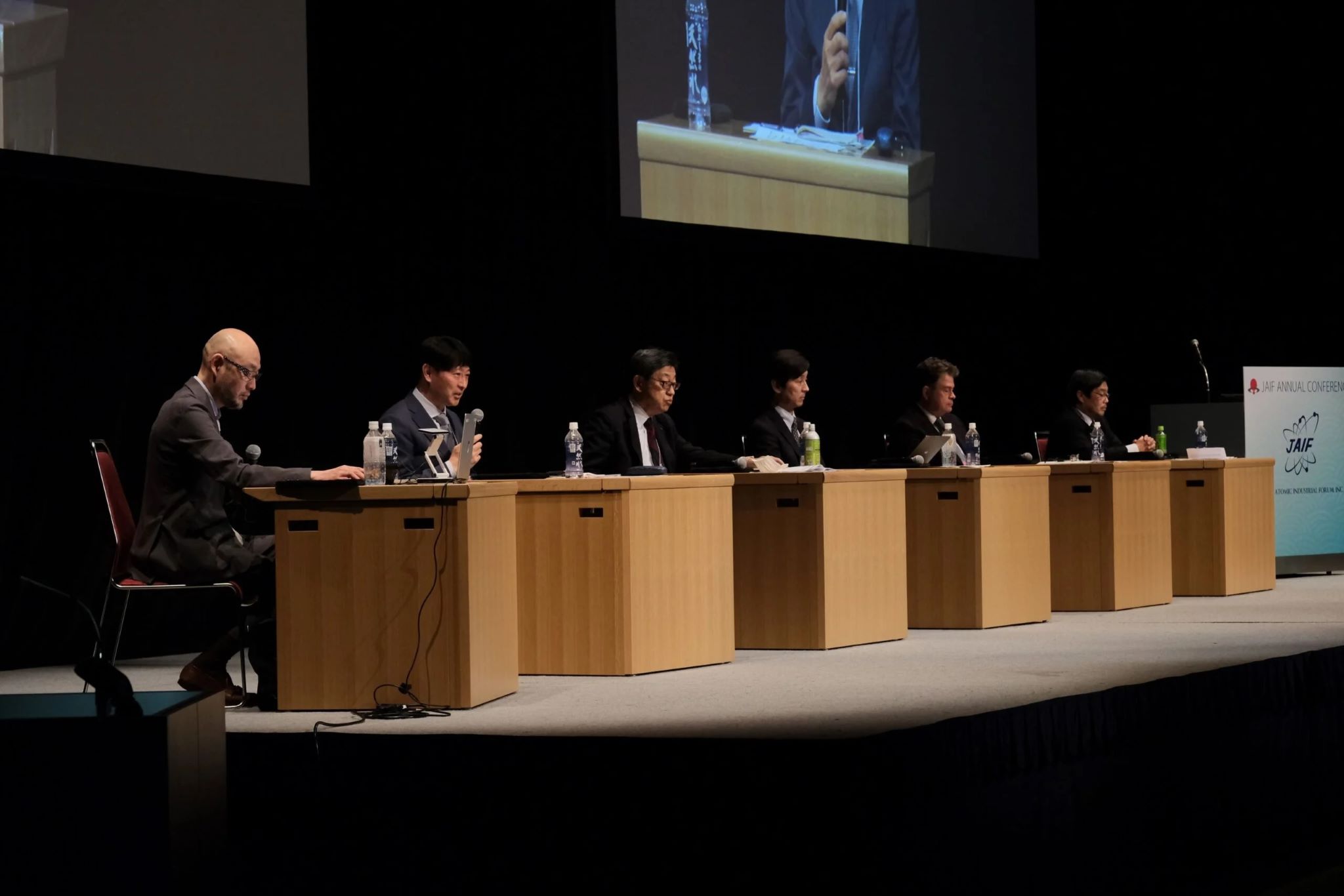In his remarks at the opening session, JAIF Chairman IMAI Takashi referred to recent decisions by the Japanese government on nuclear policy, and related bills. He said that they had “made the value of using nuclear energy clear” and that “Japan’s nuclear policy is poised to make great advancements.” He went on to say, “Now that the major courses of action for nuclear power have been presented, I expect each activity to progress specifically, steadily, and on the premise of ensured safety.” He urged the government to be engaged in developing a suitable business environment.
Regarding developments overseas, Chairman Imai expressed concern about the adverse effects of the Russian invasion of Ukraine on global energy security, now that the conflict has entered its second year. He noted that nuclear development has been accelerated in many European countries and in the United States, and that a “return to nuclear power” is being witnessed as well in several countries that had been in the process of phasing it out. Under the present global nuclear circumstances, the JAIF chairman said that he hoped for active discussions at the conference’s Session 1, “Unsettled Global Situation and States of Energy in Other Countries.”
Chairman Imai also mentioned the G7 Ministers’ Meeting on Climate, Energy and Environment in Sapporo held on April 15 and 16, at which global nuclear industry organizations, including JAIF, had delivered a joint statement to the leaders of the G7 countries. Against that backdrop, he asked for the same active discussions at Session 2, “Reevaluation of Nuclear Energy: Contributing to Revitalization of the Nuclear Industry and Global Issues.” Meanwhile, Session 3, “Reconstruction of Fukushima Now and in the Future” and Session 4, “Maximizing and Deepening Use of Nuclear Power toward 2050” were scheduled for the second day.
Next, HOSAKA Shin, head of Japan’s Agency for Natural Resources and Energy (ANRE), under the Ministry of Economy, Trade and Industry (METI), who was attending the conference and offering a greeting as a guest, said, “Humanity has always faced ‘security’ issues on energy as well as food.” Saying that the global energy situation today marked “a historical turning point” given soaring resource prices, the Russian invasion of Ukraine, and more, ANRE Commissioner Hosaka noted that nuclear power was “drawing attention again” in the global challenge to simultaneously realize a decarbonized society and achieve energy security.
In the promotion of energy policy, he emphasized that the starting point always lay with the experience of the nuclear disaster. “Reflection on the accident at the Fukushima Daiichi, and the lessons learned from it, will never be forgotten. Safety must always be the top priority,” he said.
He then described what he called “Japan’s nuclear industry’s major crisis” and how the importance of invigorating nuclear industries was now a globally recognized common issue. He said that the government would try to maintain and strengthen nuclear supply chains, technological infrastructure, and human resources through the recently established “Nuclear Supply Chain Platform (NSCP).”
Following Commissioner Hosaka’s greeting that was a video message by Rafael Mariano GROSSI, Director General of the International Atomic Energy Agency (IAEA), who said that the annual JAIF conferences, since the first one in 1968, have been invaluable fora for discussing important nuclear subjects of the day and for the future. On the Ukraine situation, he referred to his recent visit there and said that the IAEA was continuing its efforts to break through the unprecedented, should-never-have-been situation of “threats to nuclear safety and security in time of war.” He said the situation remains unpredictable.
Referring to the increasing interest in nuclear use in many countries—at least in part from the viewpoint of climate change measures—he described such interest as “globally the highest it’s been in several years.”
As issues ahead in deploying large-scale nuclear power facilities, the IAEA DG pointed to the establishment of legal frameworks, the development of financing environments, and the strengthening of supply chains. He then noted that the IAEA had launched its new Nuclear Harmonization and Standardization Initiative (NHSI) in July 2022 for the purpose of advancing the standardization of designs for small modular reactors (SMRs) and other advanced reactors, and harmonizing regulatory approaches, which would enable IAEA member countries to develop and construct them safely and efficiently.
Regarding the handling of ALPS-treated water from the Fukushima Daiichi, he said that the IAEA task force would release a comprehensive report on its safety reviews sometime this year.
In the area of ensuring nuclear human resources, DG Grossi emphasized the need to foster next-generation professionals in a steady manner. As for the improvement of the gender balance, he explained the IAEA’s new Lise Meitner Programme (LMP), in addition to the existing Marie Sklodowska-Curie Fellowship Programme (MSCFP), asking Japan for its understanding and cooperation.
In the opening session, Ms. SAKURAI Yoshiko, a journalist and president of the Japan Institute for National Fundamentals (JINF), gave a special presentation on “Making Japan Vigorous Based on Nuclear Power.” The broad use of nuclear power, she said, was a key to pursuing the opposing goals of promoting new industries and reducing CO2—two things that can easily become contradictory. “In Japan, since the accident at Fukushima Daiichi, the safety of nuclear power plants (NPPs) has been dramatically improved, and, around the world, interest has grown in the construction of NPPs with enhanced safety. Japan should be an active participant in this trend.”
Referring to the power shortages experienced primarily in Japanese metropolitan areas last spring, Sakurai pointed out the risks of excessive reliance on renewable energies, as well as costs and locating restrictions. She said that because energy policy was the foundation of the state, it must be implemented based on reality and for the national interest. In comparison with other countries, she said that Japan’s ratio of installed capacity of PV power to total land area was among the highest in the world, but that emissions factors (CO2 emissions per kWh) in power generation and heat supply, taken together, were disappointing. Pointing out the use of thermal power as a backup to renewable energies as the cause of that situation, she asserted that nuclear power—as a stable power supply—should be positioned as one of the main sources.
Based on her experience visiting many nuclear facilities since the accident at Fukushima Daiichi, Sakurai talked about the importance of giving people a fuller appreciation of the efforts made to improve safety. She also pointed to the need for fundamental improvements in nuclear regulation, considering the lengthening safety examinations seen now in efforts toward restarting shutdown NPPs.
Finally, she referred to the fact that when the giant March 2011 earthquake (officially named the Great East Japan Earthquake) occurred, followed by the accident at Fukushima Daiichi (Fukushima I), a severe accident was prevented at TEPCO’s Fukushima Daini (Fukushima II) by teamwork at the site. She said that Japan’s nuclear technology was excellent, and that it was the government’s responsibility to “substantiate the efforts at the working sites.”


